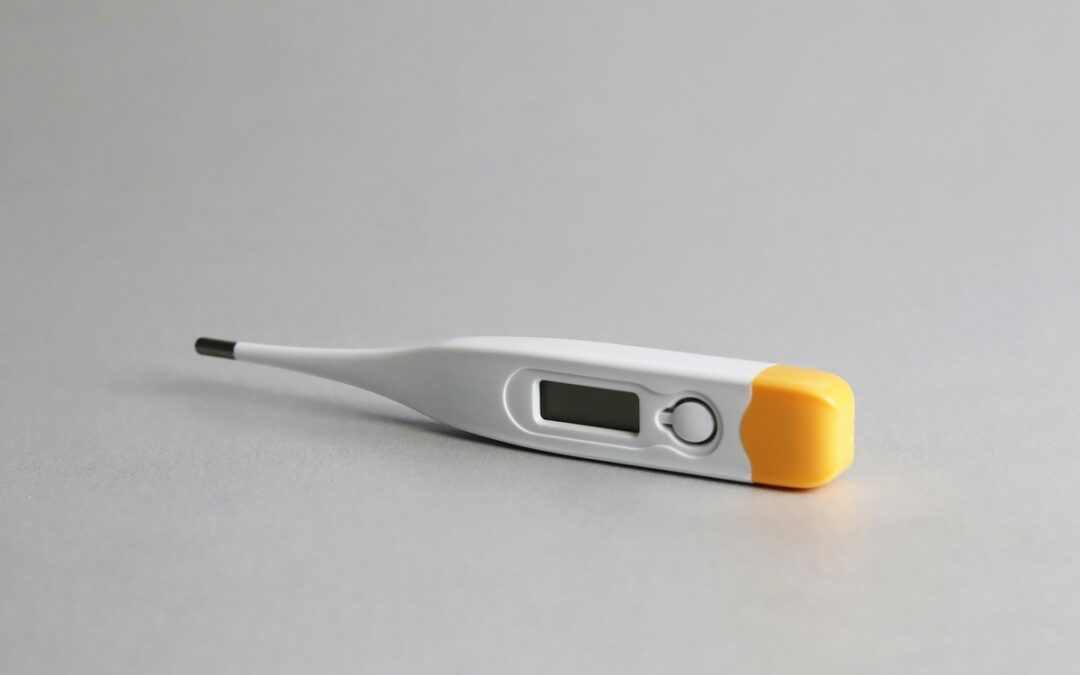What Is Considered a Fever?
Fevers tell us a lot about the state of our health. From signaling that we’re sick to showing that our bodies are putting up a fight, they’re key for assessing how well healing is going. Let’s go into the different degrees of fevers and considerations for adults, children and infants.
Understanding Fevers
A fever occurs when the body increases temperatures to fight harmful pathogens (this often proceeds or occurs with an infection). A fever doesn’t increase the duration of an illness, and it often won’t pose any danger or require treatment for adults. Children and infants, however, can be more susceptible to danger.
Determining that you or someone else has a fever depends on checking body temperature. The temperature you’re looking for depends on the method used to take it. In addition, there can be further variance based on factors such as aging (which lowers a body’s temperature) and activeness (which raises a body’s temperature).
Here are the temperatures, based on different methods, that generally indicate a fever.
- Rectal Thermometer (100.4 F or Higher): The most accurate means of measuring body temperature.
- Temporal Arteries (Forehead) Scanner (100.4 F or Higher): While this way requires a temperature scanner, the results are highly accurate.
- Mouth Thermometer (99.5 F or Higher) or Ear Thermometer (100.4 F or higher): Both methods are less accurate but are easily doable at home and viable if done correctly.
- Armpit Thermometer (99 F or Higher): This option should be your last resort since it’s most likely inaccurate.
Differentiating Fever Types
A fever is considered low-grade or high based on its temperature range and symptom severity.
Low-Grade Fevers – 100.4 F – 102.2 F
Low-grade fevers are often tied to common, low-intensity ailments like colds or a minor flu. As such, they typically don’t require intensive care steps. A low-grade fever comes with illness symptoms and conditions that can include:
- Sweating, shivering and/or chills
- Glazed-over eyes
- Headaches and/or muscle aches
- Warm and/or flushed skin
- Additional cold-like symptoms
High Fevers – 102.2+ F
A high fever is more serious and may require urgent care if it lasts more than two days and isn’t alleviated by at-home steps or over-the-counter medicines. It’s best to play these situations safe, especially in case of infant and child fevers. Visit an emergency room ASAP if any of these symptoms or issues appear:
- Extreme confusion, irritability and/or discomfort
- Absence of sweating
- Seizures
- Prolonged difficulty keeping foods or liquids down or in
- Severe headaches and/or neck pain
- Extreme abdominal pain
- Severe shortness of breath and/or chest pain
- Strong pain or burning with urination
Fevers in Adults Vs. Fevers in Infants and Children
In addition to general fever differences, adults and children experience fevers differently.
Adult Fevers
Generally, the older you are, the lower your average body temperature will be. This can mean that low-grade and high fevers stay at the lower end of their temperature ranges. Additionally, adults with fevers—especially high ones—will often show visible signs of being sick.
Infant and Child Fevers
Infants and children normally have slightly higher body temperatures and, as such, have slightly higher fever temperature ranges. At the same time, they may not show any signs of being sick. Look out for out-of-the-ordinary uncomfortableness or restlessness as early indicators if they can’t/don’t communicate feeling sick.
Managing Fevers: Treatment and Care
In most cases, treatment measures are not meant to eliminate a fever or shorten its length. They’re mainly for ensuring a fever can’t stop you from getting the rest and comfort you need to recover. As such, it’s often worth trying out a range of options to feel better.
Home Remedies
- Some care methods can easily be done at home for both adults and children.
- Keep fluid intake high to offset any illness-related loss and ensure hydration
- Keep cool with highly breathable clothing
- Consider a bath in cool water (lukewarm water is fine if colder water can’t be tolerated)
- Use a lightweight blanket to help offset chills
Over-the-Counter Solutions
Products designed to offer comfort and relief for adults include medicine types like acetaminophen (e.g., Tylenol) and ibuprofen (e.g., Advil). For non-adults, be sure to abide by the following:
- Children 6 months and older can take child-specific acetaminophen or ibuprofen medicines (just be sure to follow instructions diligently)
- Avoid pain relievers for infants and aspirin for children unless you check with their primary care doctor first
Consulting Healthcare
Seeing a healthcare professional may only seem like an option in extreme cases. But with the convenience of an urgent care center, you can always come in when you feel that something isn’t right or that treatment could help.
Get Help with Fevers and More at Carolina QuickCare
As long as you pay attention to the signs, a fever is often just a minor part of the larger healing process. Whether you’re insured or opt for self-pay, you’ll receive affordable care that always puts you and your family first. Walk in when you’re ready or check in online for the location closest to you.


Recent Comments